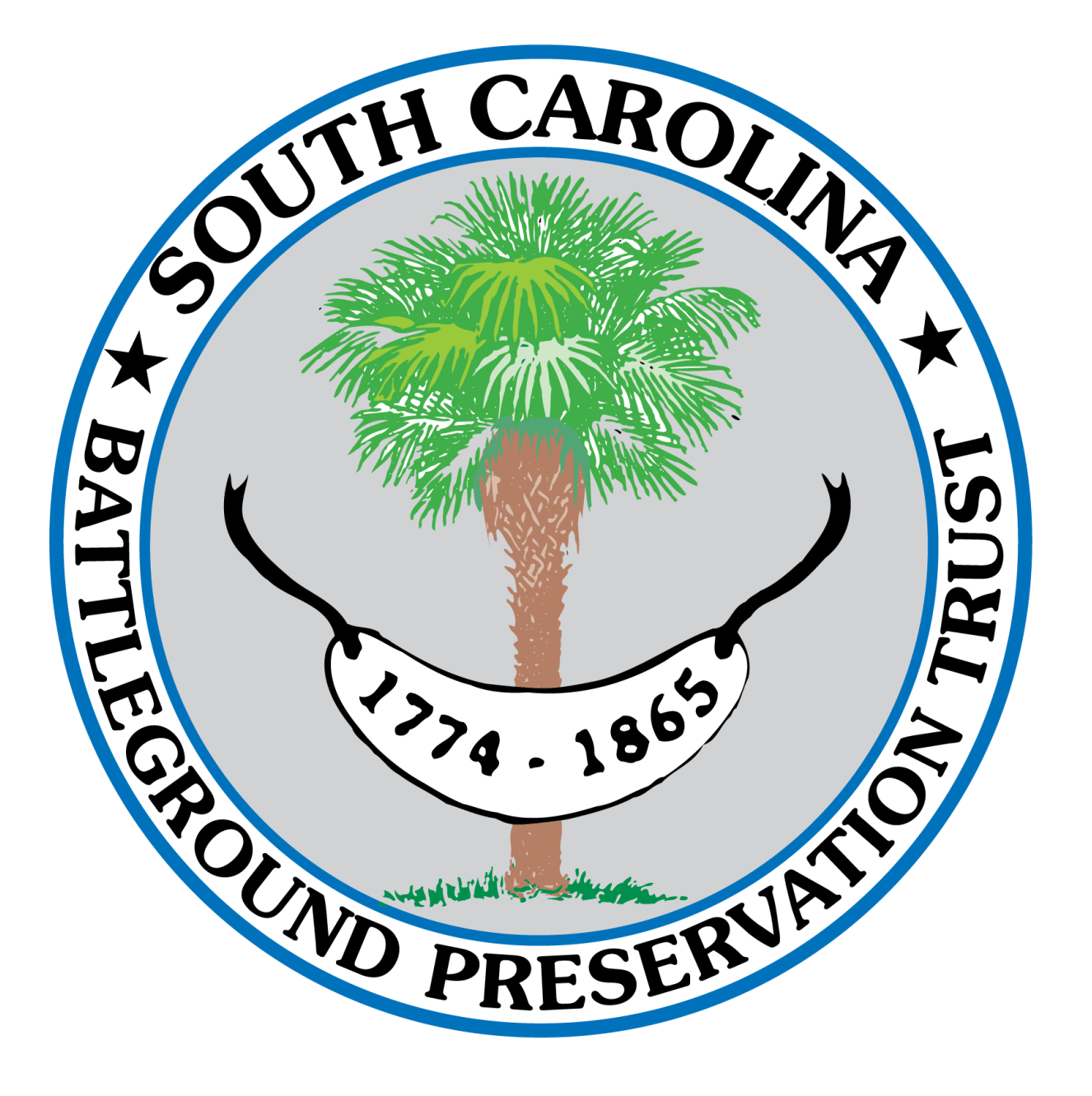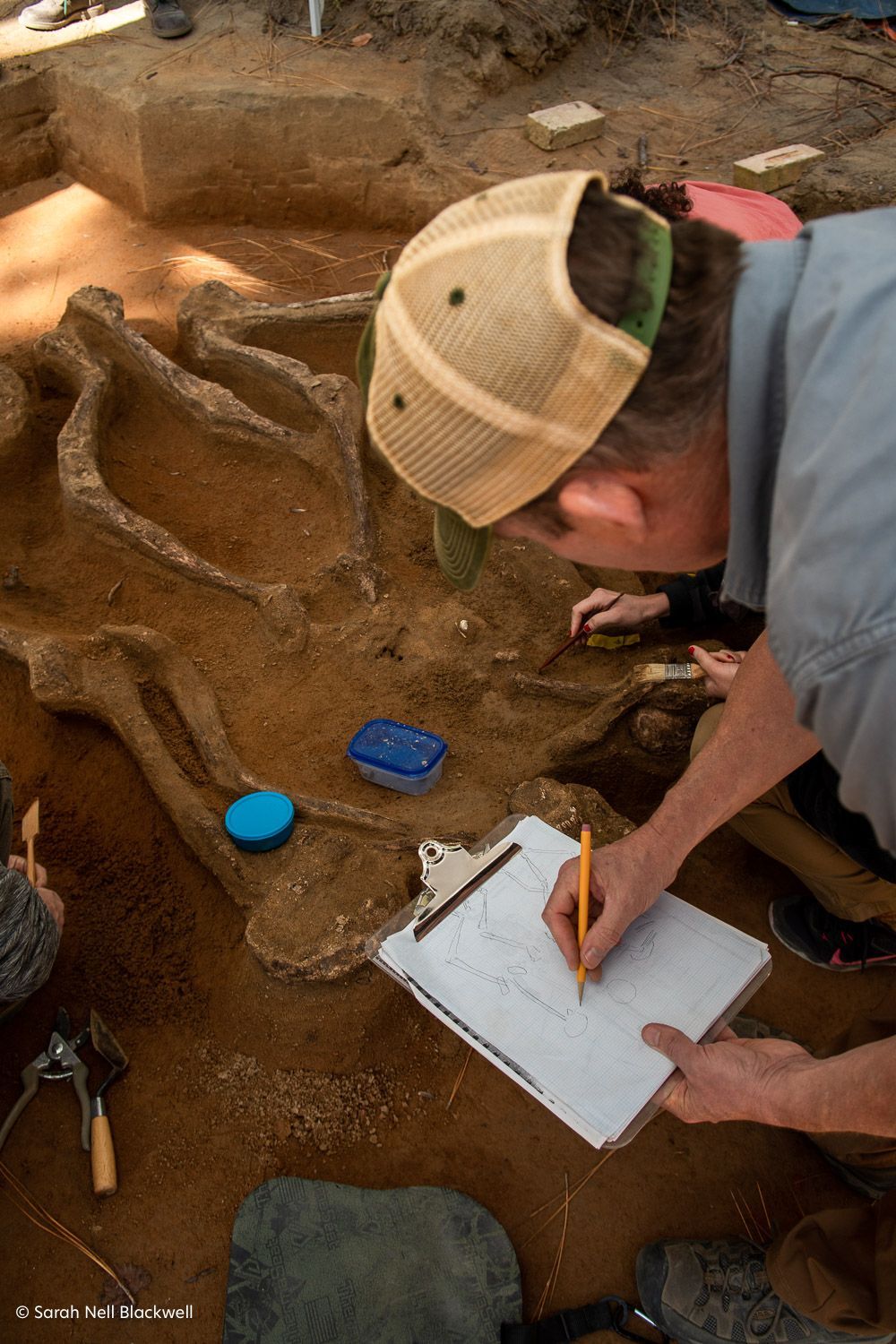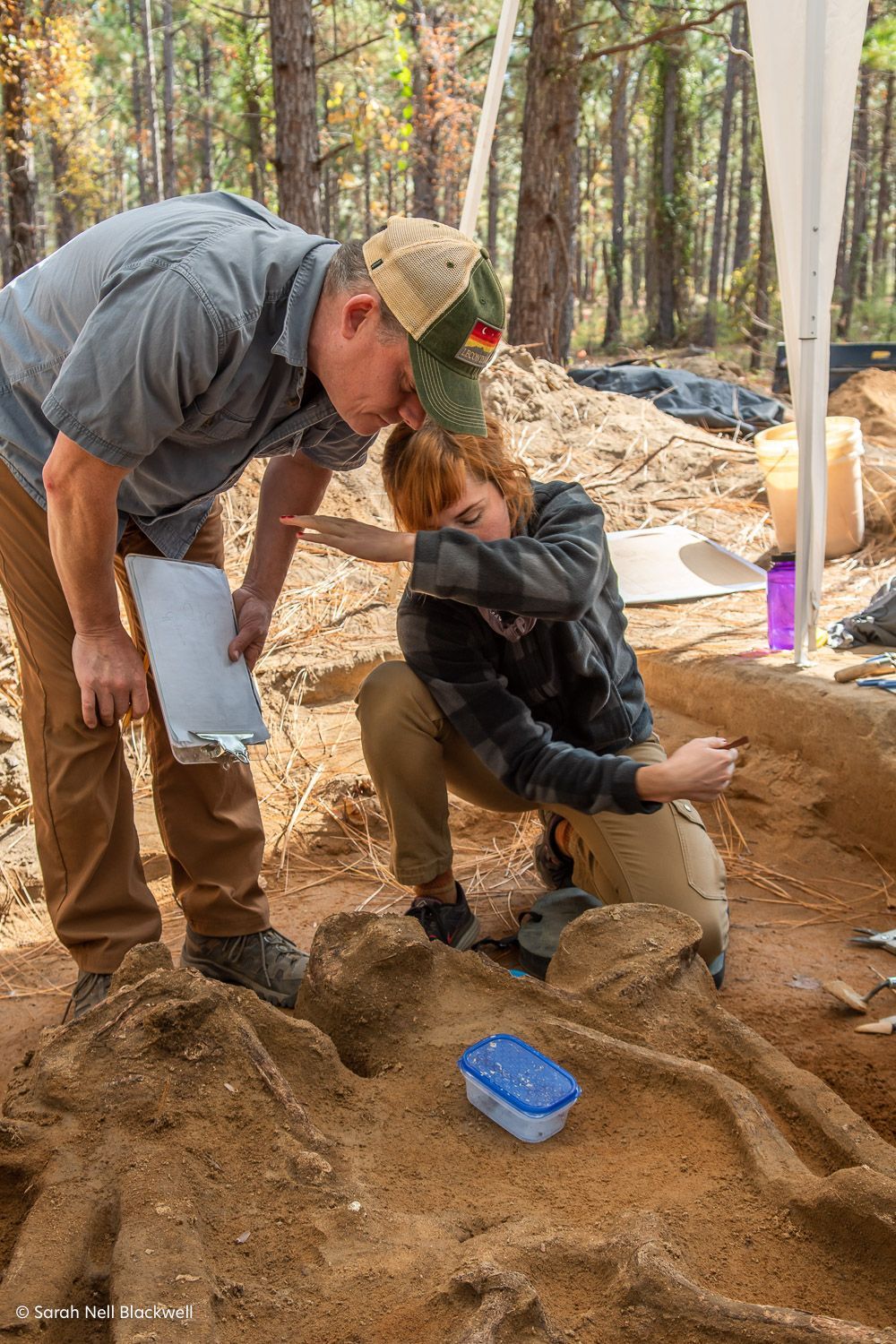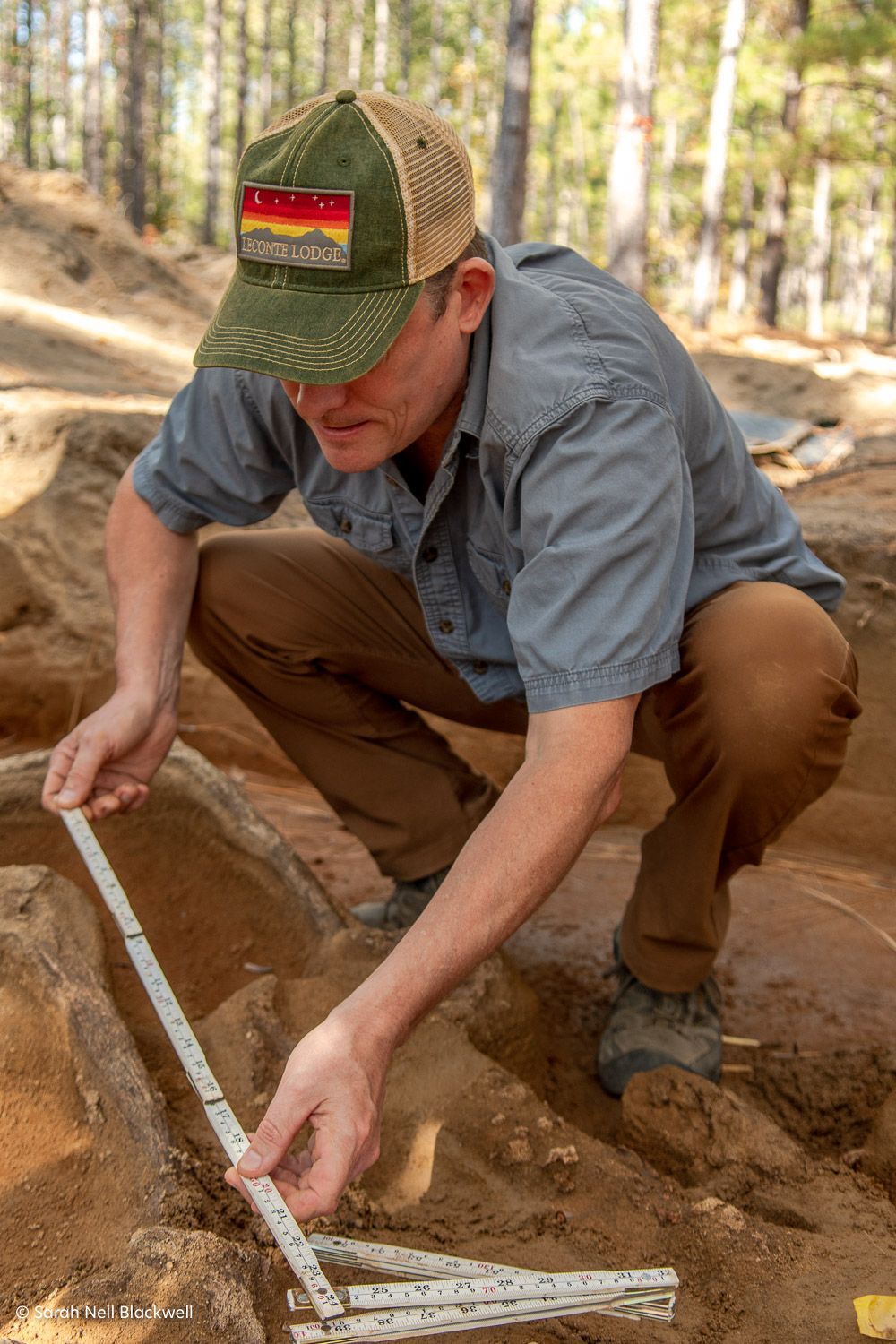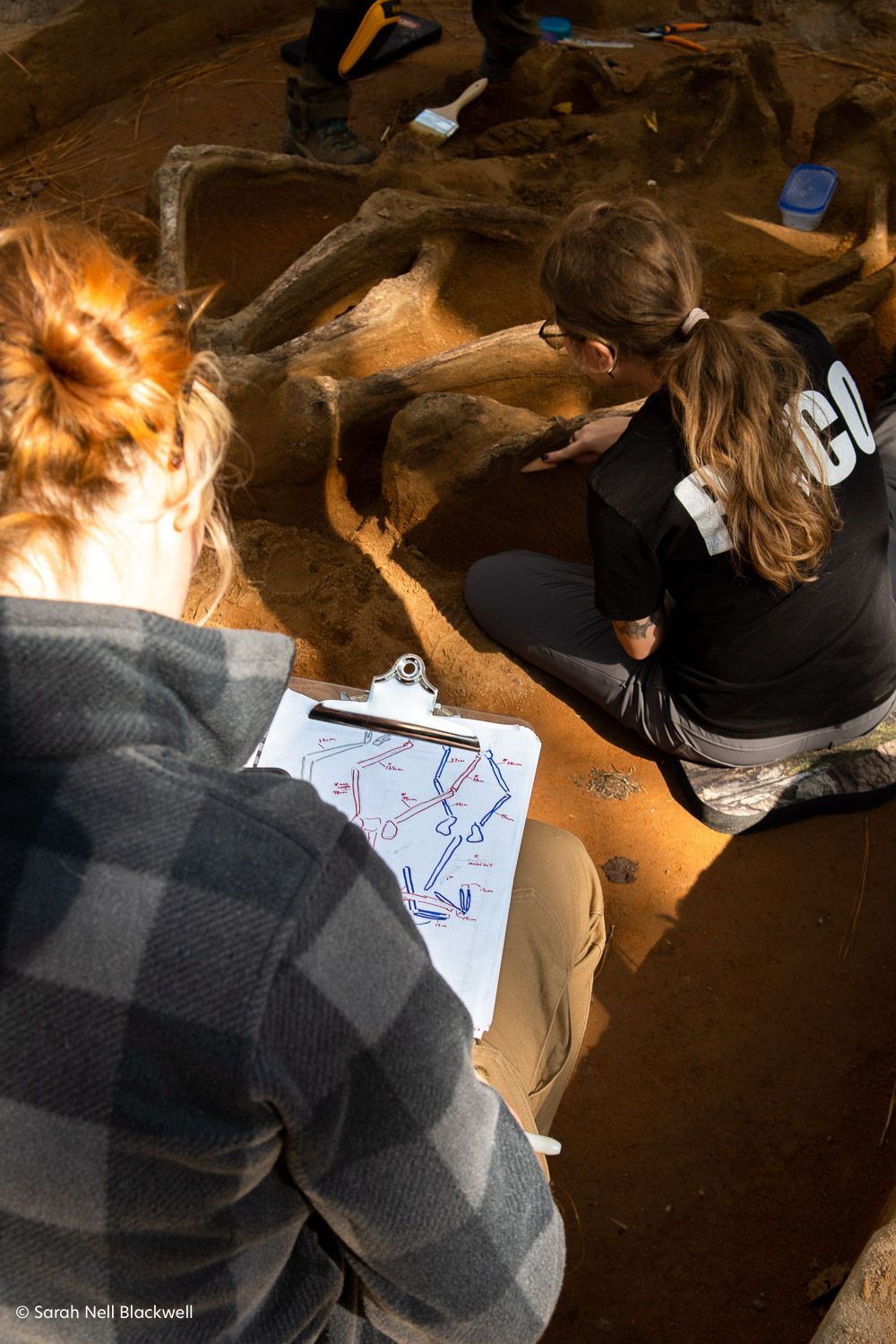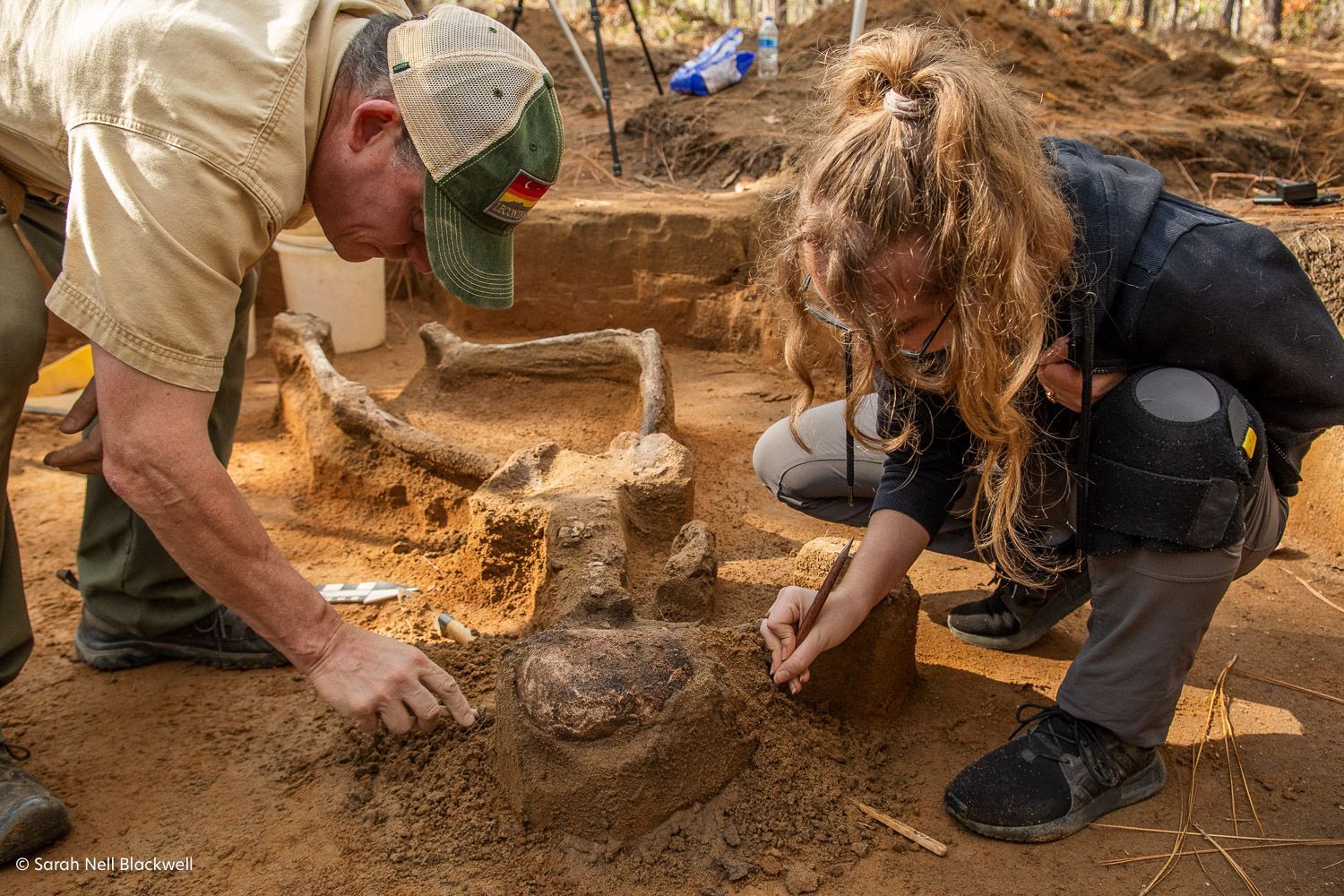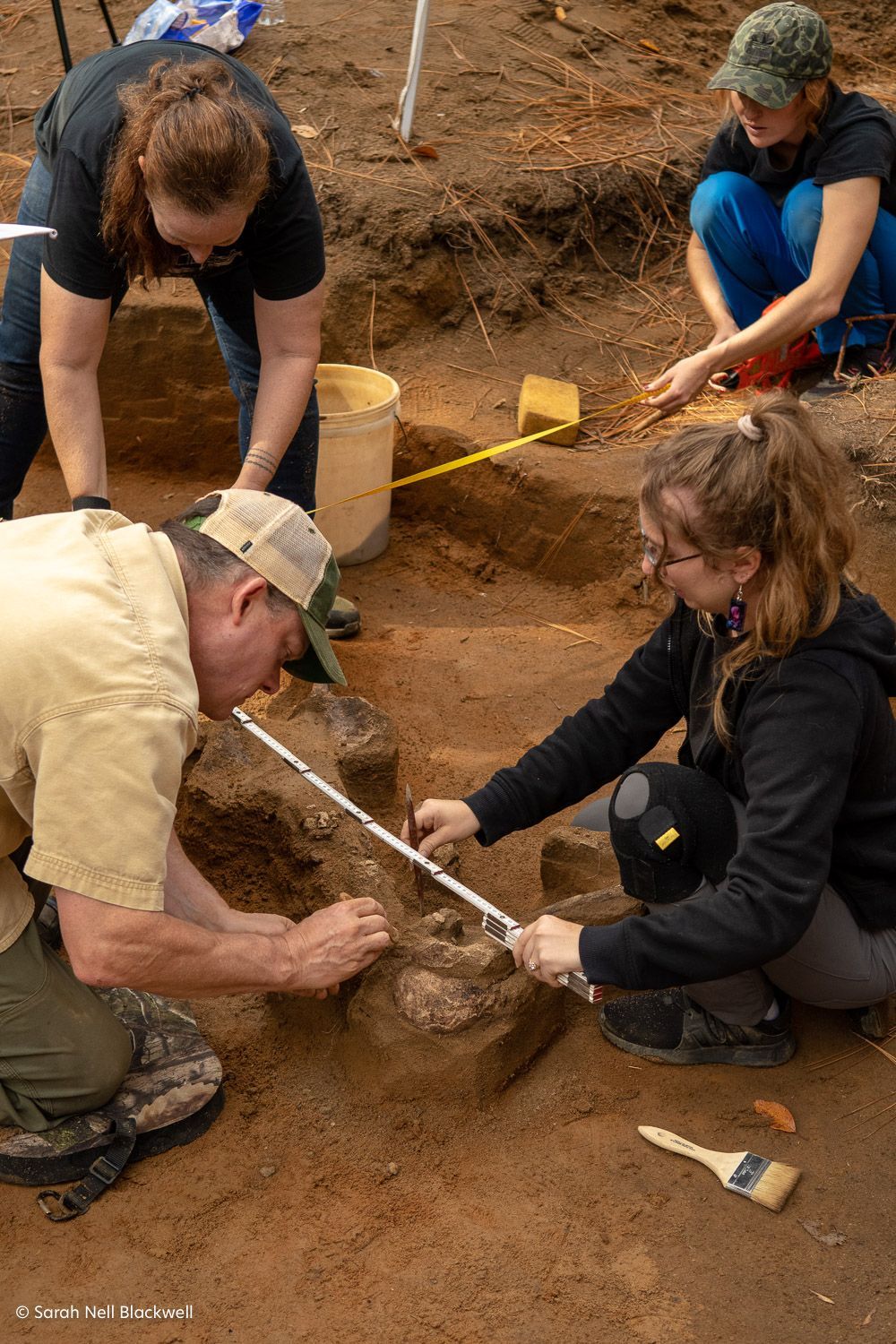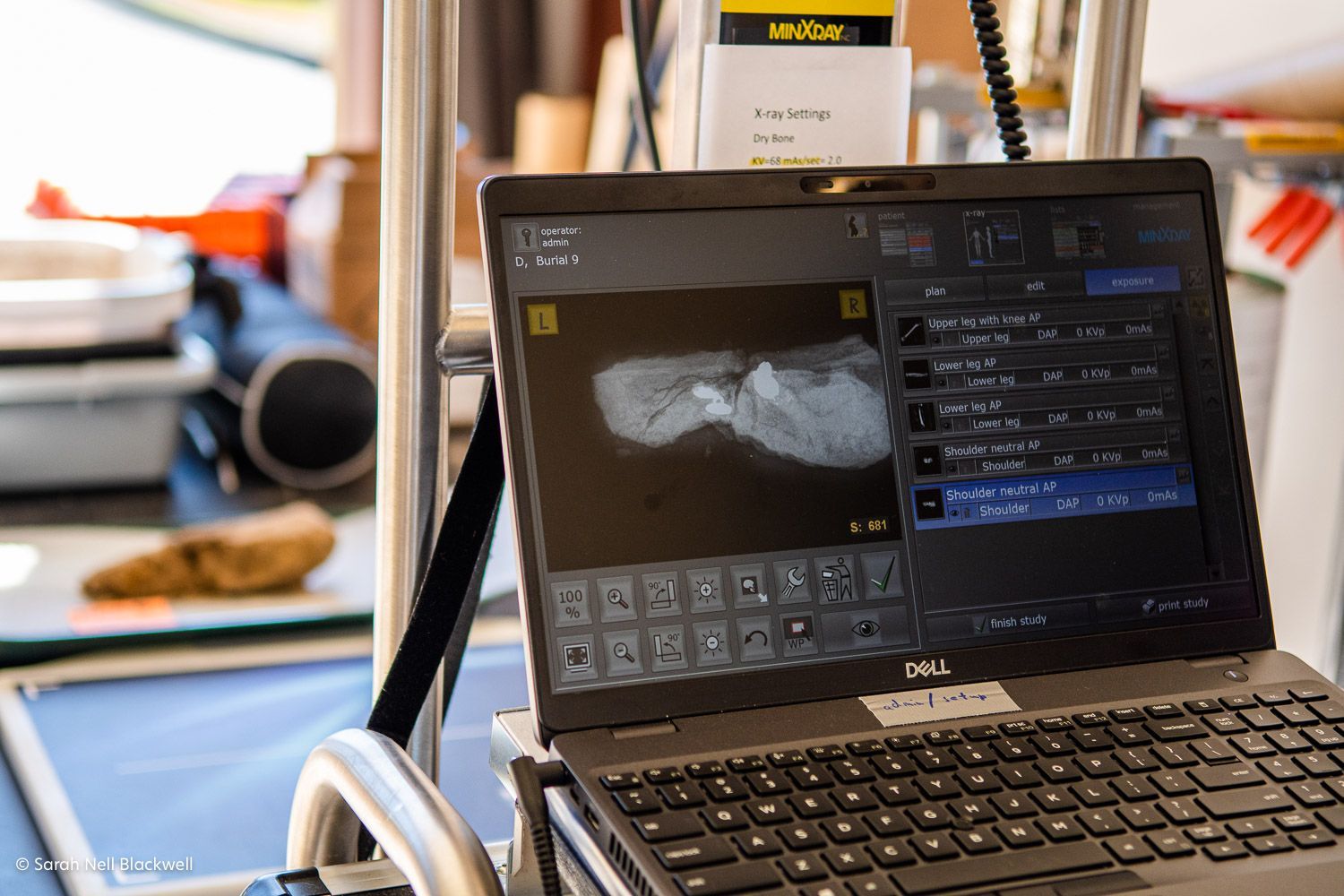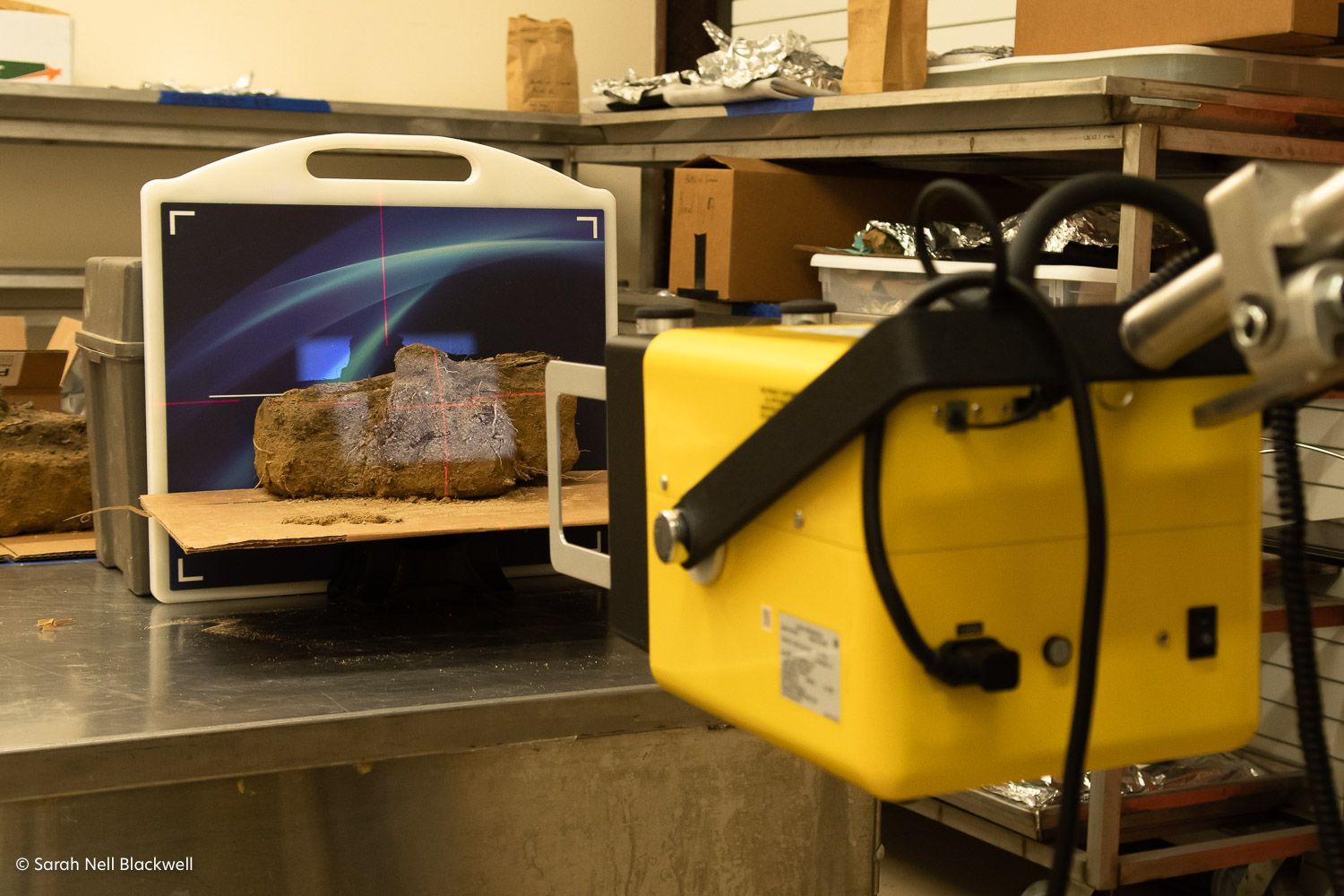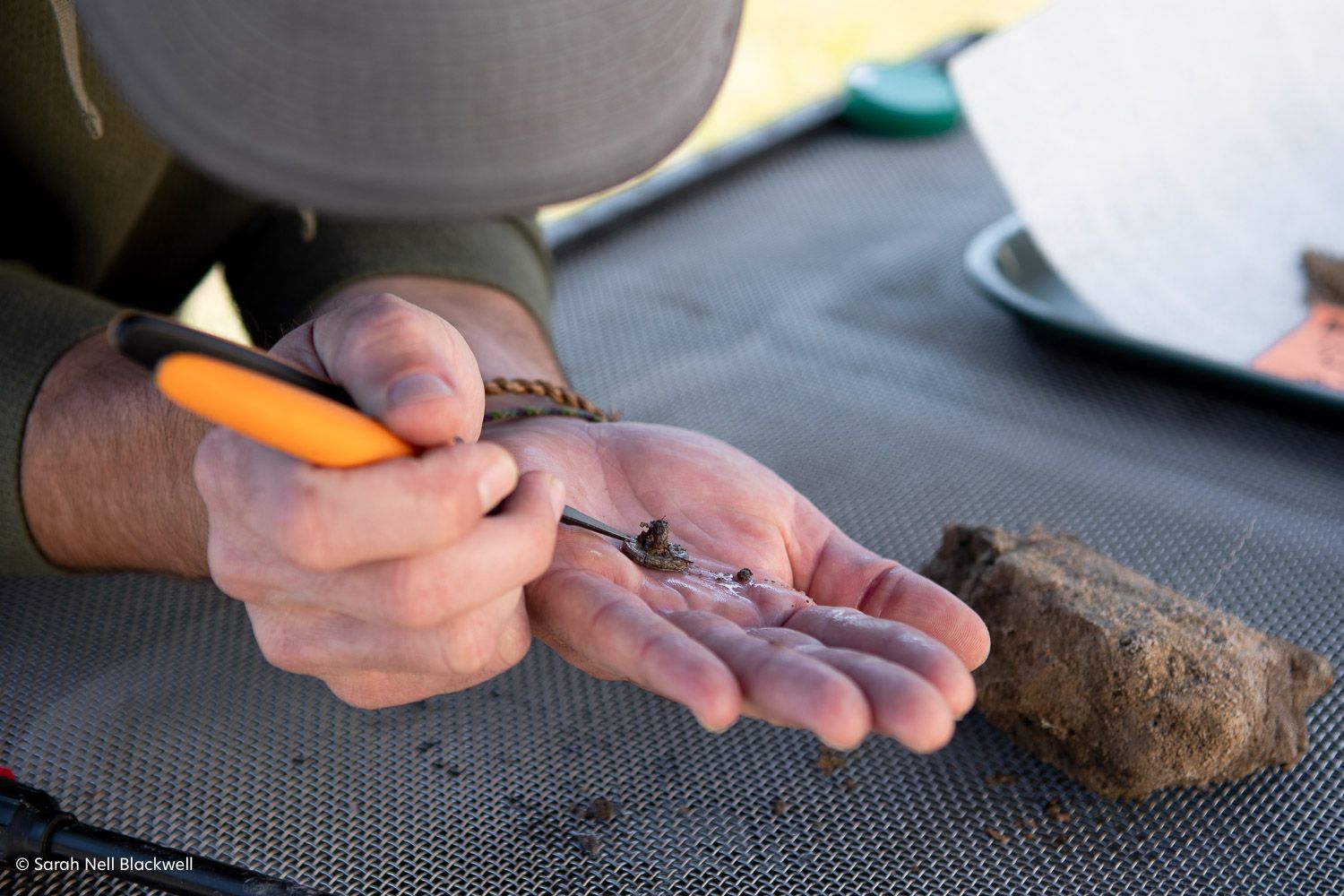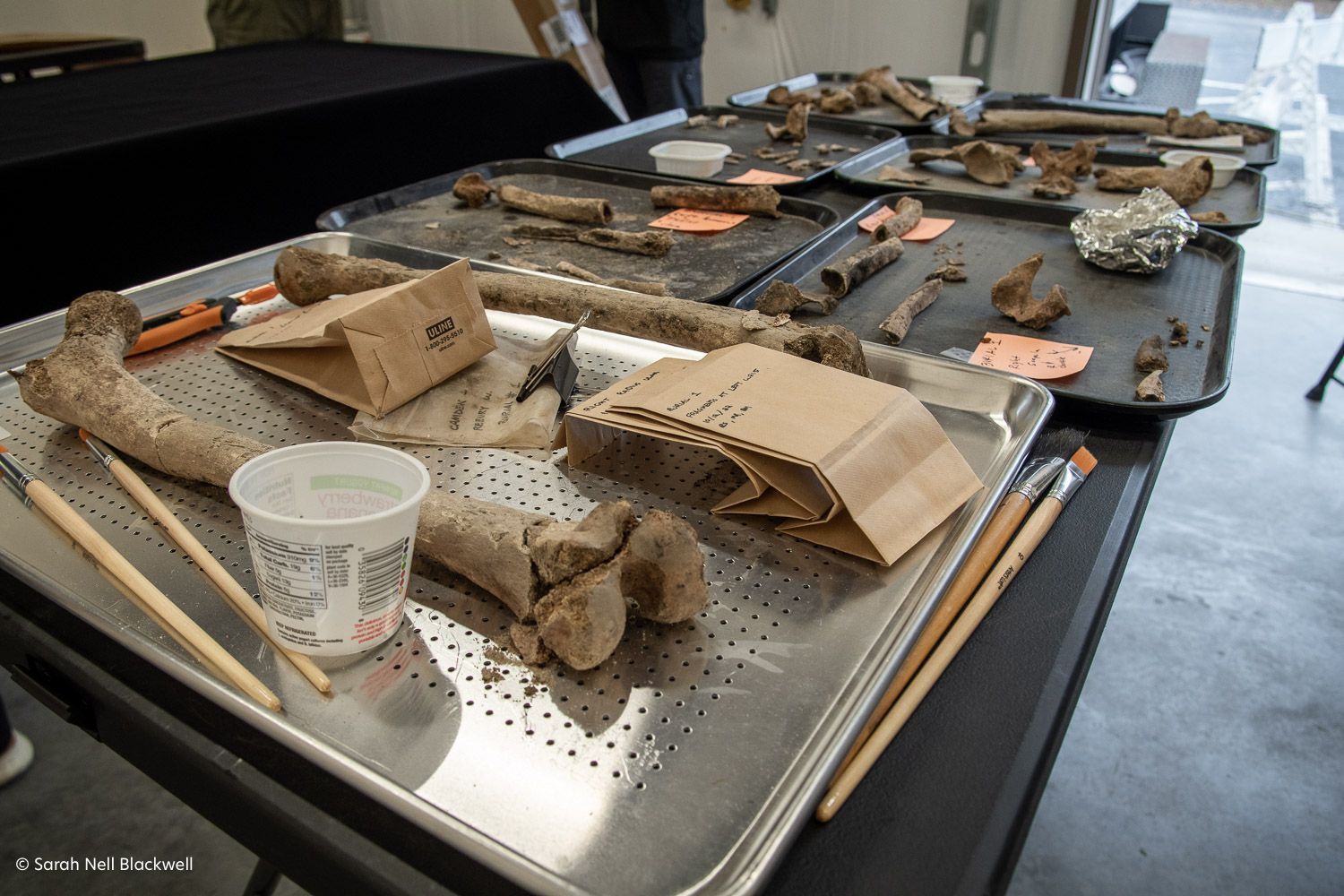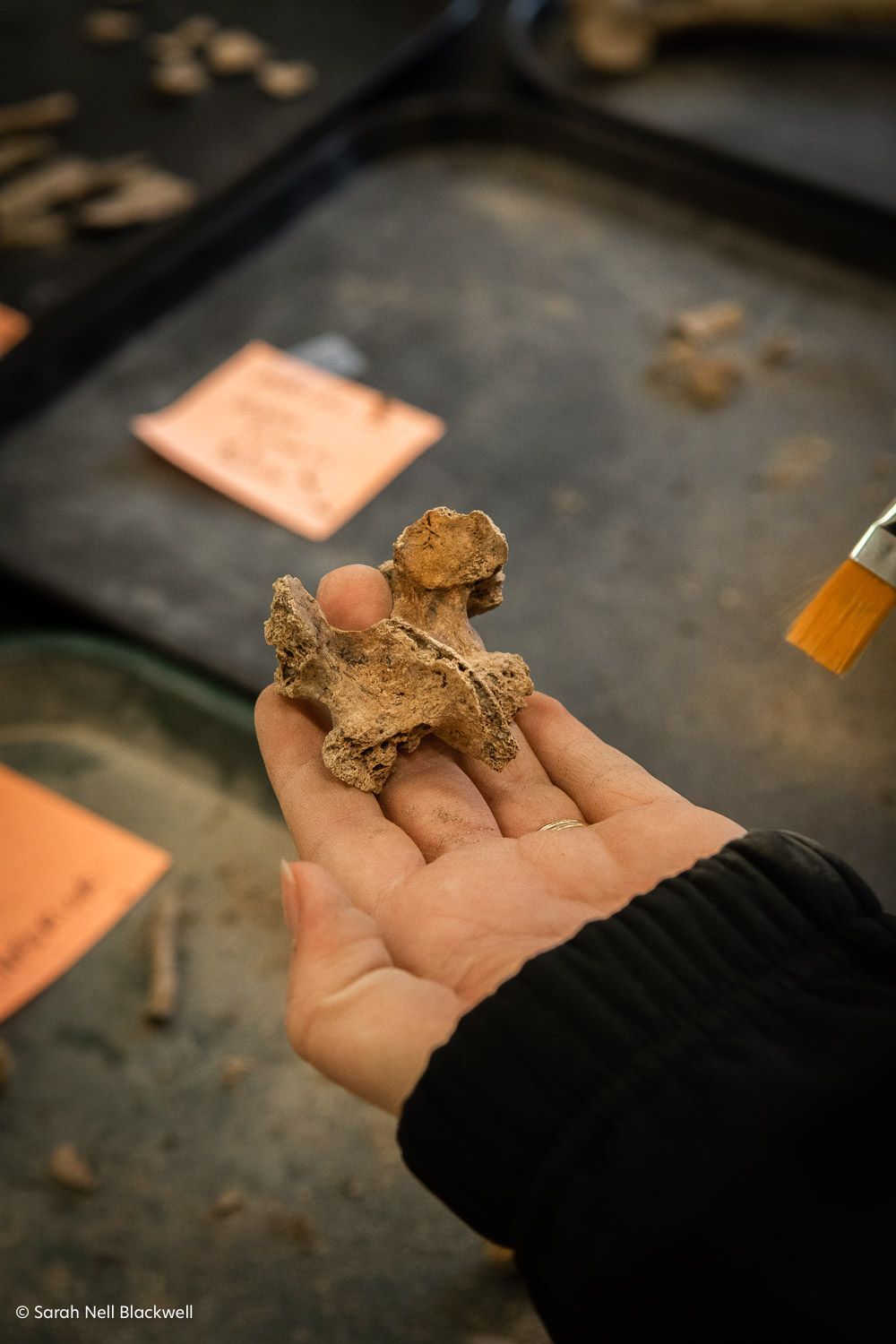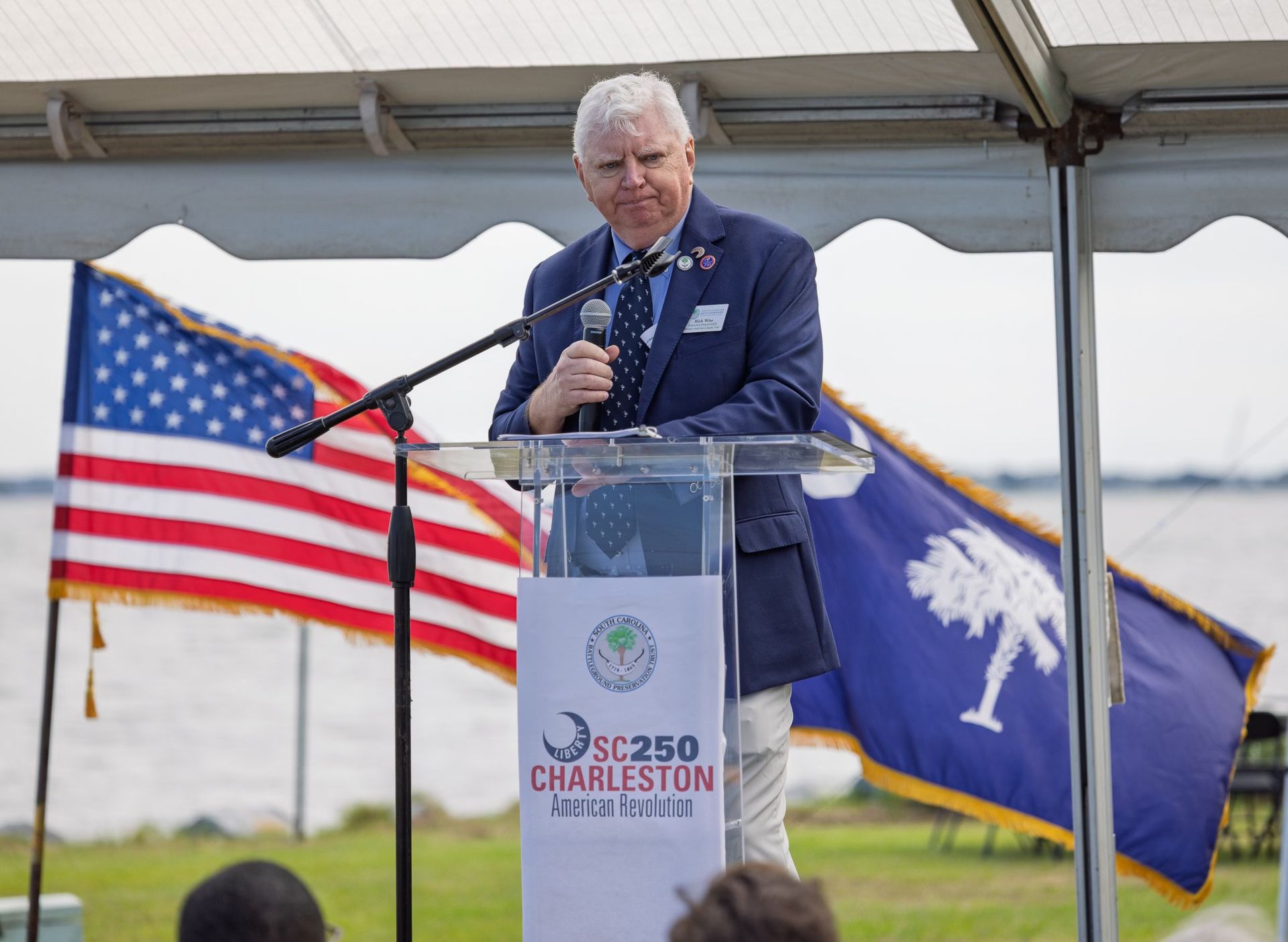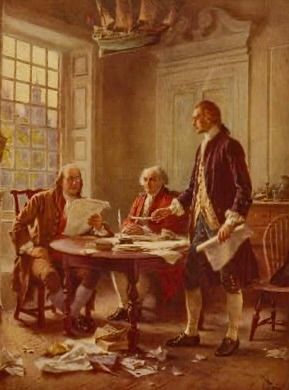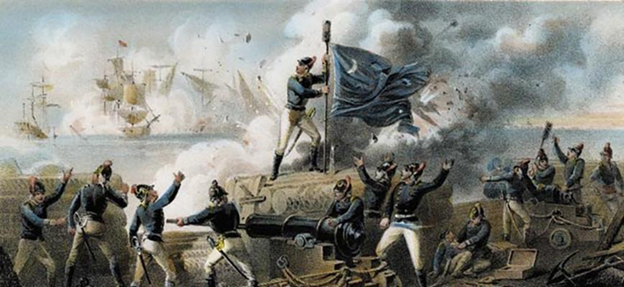The Biological Anthropologists of Richland County Coroner’s Office
Dr. William Stevens, Dr. Madeline Atwell, and Rachel Baker are forensic anthropologists at the Richland County Coroner’s office who have contributed their extensive knowledge on bones to the Camden Burials project. Preferring the label “biological anthropologist,” the team has aided with the recovery of the soldiers’ remains, overseen the final steps in removal from the ground, and coordinated the transportation back to their lab where forensic tests could be run.
Dr. Stevens, deputy coroner at RCCO explained his team’s role as, “a kind of humanitarian recovery salvage, to prevent the soldiers’ from being further damaged from the field to the lab, to the burial reinterment with respect.”
When the team of biological anthropologists at the Richland County Coroner’s office was first approached by the South Carolina Institute of Archaeology and Anthropology (SCIAA) to help on the project, Dr. Atwell recalls SCIAA’s sensitivity in framing their request. “How do we get these people safely and kindly and ethically out of the ground?” She says knowing the aim of the project was to apply reverence and honor to the soldiers made it an easy decision to join the effort.
Working alongside the archaeologists on site, Dr. Stevens, Dr. Atwell, and Baker identified each bone that was uncovered and helped the archaeologists strategize where and how to continue digging to avoid damaging the bones.
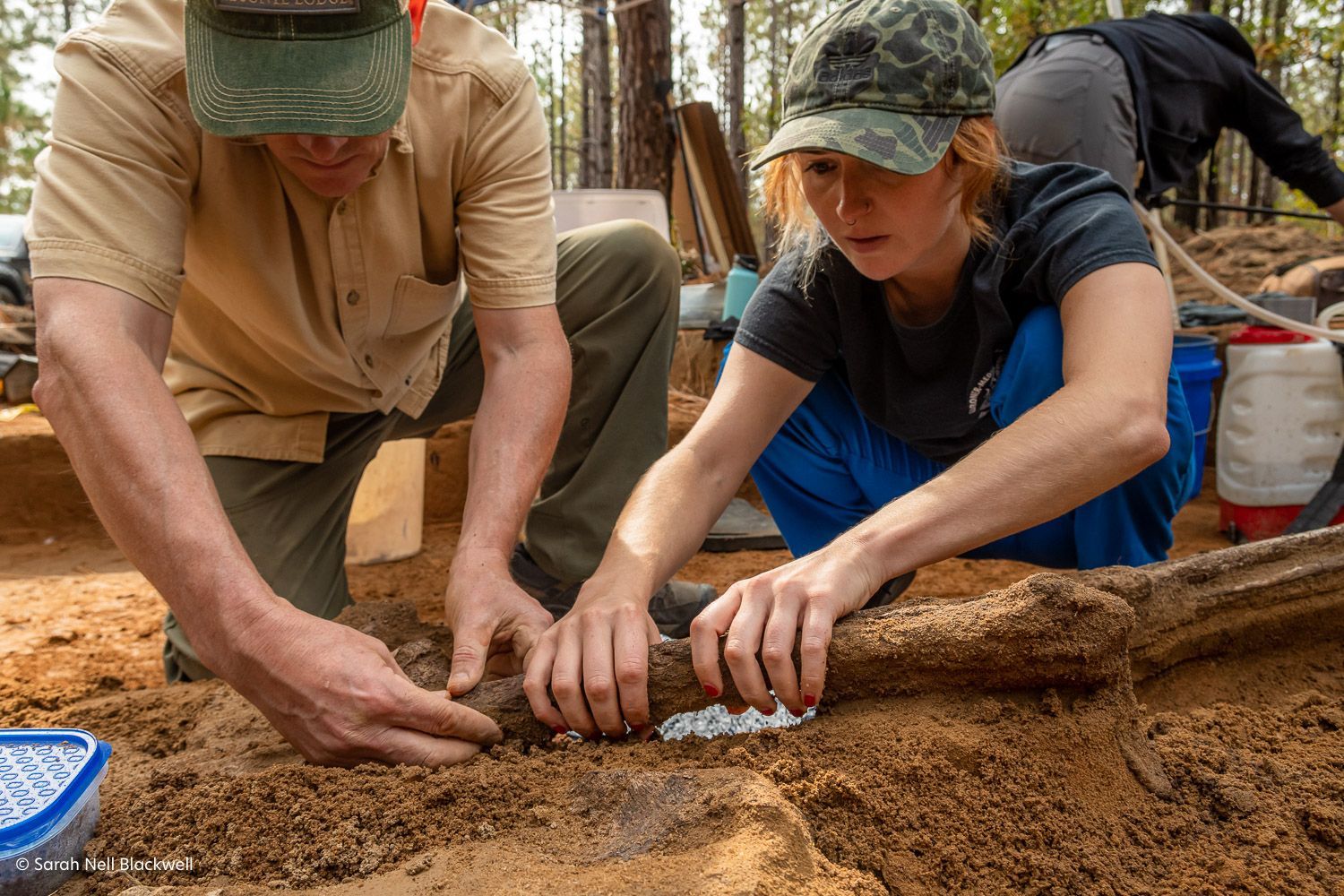
“It was our job to say, ‘This is a human patella, and if the person’s undisturbed, then this area to the left is where the rest of the leg should be.’ And we would give them an outline of where to start brushing instead of digging, and to be very gentle.” Dr. Atwell explained detailing her and her fellow biological anthropologists’ duties on site, “So in addition to that when we got further down and we started what we call a pedestal, sort of working around to elevate the person on dirt, it was exclusively up to us to remove the individuals as safely and ethically as we could.”
Once the bones were removed from the ground, the coroner’s team transported the remains to their lab with the utmost care for further storage, organization, and analysis. In the lab the team took detailed photos of each bone and then prepared them to be x-rayed.
Baker, a deputy coroner at the Richland County Coroner’s office explained the significance of the X-rays in the process, “We’ve been using the X-rays to pinpoint if there are buttons or any buck shot, anything like that still stuck in the matrix because that will shine brighter than anything else.”
With the technology of the X-rays the anthropologists were able to find clues to how the person may have died, or if there are any artifacts buried within the bones and dirt, without having to further harm the bones. The forensic analysis provides context to how old these soldiers were and how they may have died during the battle.
Once the forensic work at the lab is complete, the RCCO team is then charged with the task of preparing each individual for reinterment through careful organization and arrangement of the remains. Dr. Stevens has a few different ideas of the best way to do this, but ultimately will take everyone involved in the project's wishes and expectations into account.
Dr. Stevens, Dr. Atwell, and Baker all shared similar reflections on their work during the project as having been a huge privilege to contribute the biological information of the soldiers with the hope that it may further the historical understanding and the memory of each one who died during the Camden Battle.
